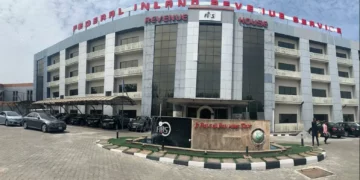No fewer than 25 communities along the bank of the River Niger have been submerged by flood in Edo State following the release of water from Lagdo Dam in Cameroon.
The affected local government areas on the bank of the River Niger include Etsako East, Etsako Central and Esan South East.
Speaking with journalists, Desk Officer, Esan South East local government council on Relief Materials and Distribution, Ojimah Christopher, said 25 communities were submerged by the flood.
Ojimah, who is also the Local Government Secretary, Emergency Committee, said the Internally Displaced Persons (IDPs) Camp in the local government area has already been filled by displaced persons as a result of the incident.
According to him, there were some communities, especially Ifeku, that have been completely submerged and people’s property and livestock swept away.
A resident of the affected area, John Odaku, said their farmlands, where yam, cassava, groundnut and others were cultivated, have been submerged by flood while farm produce already harvested were swept away.
He said they could not take their belongings due to the rising level of the water, which, according to him, was more than that of last year.
“We couldn’t salvage our crops and farm produce and livestock as they were swept away by the ravaging flood,” he stated.
He called on the State and Federal Governments to come to their aid, noting that the local government council had been shouldering their responsibility.
Meanwhile, the National Emergency Management Agency (NEMA) has charged the affected people to relocate to IDP camps to avoid casualties.
Speaking on the development, the Head, NEMA Benin OperationS office, Dahiru Yusuf, said the agency has been monitoring the flood situation in collaboration with state and local governments and other stakeholders.
“Three local governments of Esan South-East, Etsako East and Etsako Central. Some communities are displaced already,” Yusuf said.
He said they had visited all the flood-prone local government areas to assess their level of preparedness, noting that most of the IDP camps in the various local government areas of the State were ready.
We’ve got the edge. Get real-time reports, breaking scoops, and exclusive angles delivered straight to your phone. Don’t settle for stale news. Join LEADERSHIP NEWS on WhatsApp for 24/7 updates →
Join Our WhatsApp Channel










